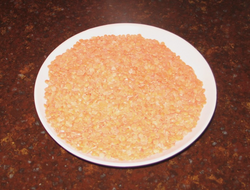Zinc: A trace mineral with many functions
Published: January 12, 2023
Although only present in your body in small amount, zinc is involved in many important metabolic processes.
Your body contains between 1.5-2.5 g of zinc usually as the divalent cation Zn2+, sequestered in all of your organs, tissues, and body fluids in varying amounts.
Functions
Zinc participates in a diverse range of fundamental metabolic processes in your body as a component of metalloenzymes.
A metalloenzyme is a protein which has one or more minerals incorporated into its structure.
It is thought that zinc acts with up to 200 enzymes such as:
- digestive enzymes
- enzymes involved in the synthesis of DNA
- enzymes involved in the synthesis of heme, the part of hemoglobin and myoglobin that holds iron in meat, fish and poultry, and in your blood
In general, zinc is involved in the following functions:
- Stabilization of cell membranes by defending against free-radical attacks
- affects membrane proteins’ conformation and interactions
- Immune function
- Growth and development:
- cell replication, bone formation, skin integrity
- Insulin synthesis, storage and release from pancreas
- Blood clotting
- Thyroid hormone function
- Behaviour and learning performance
- Production of vitamin A (retinal)
- Production of retinol-binding protein that transports vitamin A
- Taste
- Wound healing
- Fetal development
- Sperm production
- RNA catabolism (zinc influences ribonuclease activity)
- Regulation of protein synthesis
- Nucleic acid synthesis and catabolism
- Regulation of transcription, structural component of DNA binding proteins
Recommended Dietary Allowance (RDA)
The RDA for zinc is the average daily amount required which is considered sufficient to meet the needs of most healthy people.
Children have a relatively higher requirement for zinc to meet their growth and development needs...link to the full article to learn more.
References
1.
Gropper, S.S., Smith, J.L. & Groff, J.L. (2005). Advanced Nutrition and Human Metabolism (4thEd.). Belmont, CA: Thomson Wadsworth.
2.
Whitney, E. & Rady Rolfes, S. (2005). Understanding Nutrition. Belmont, CA: Thomson Wadsworth
3.
Center for Science in the Public Interest Nutrition Action Health Letter (March 2014, November 2013, January 2013)

